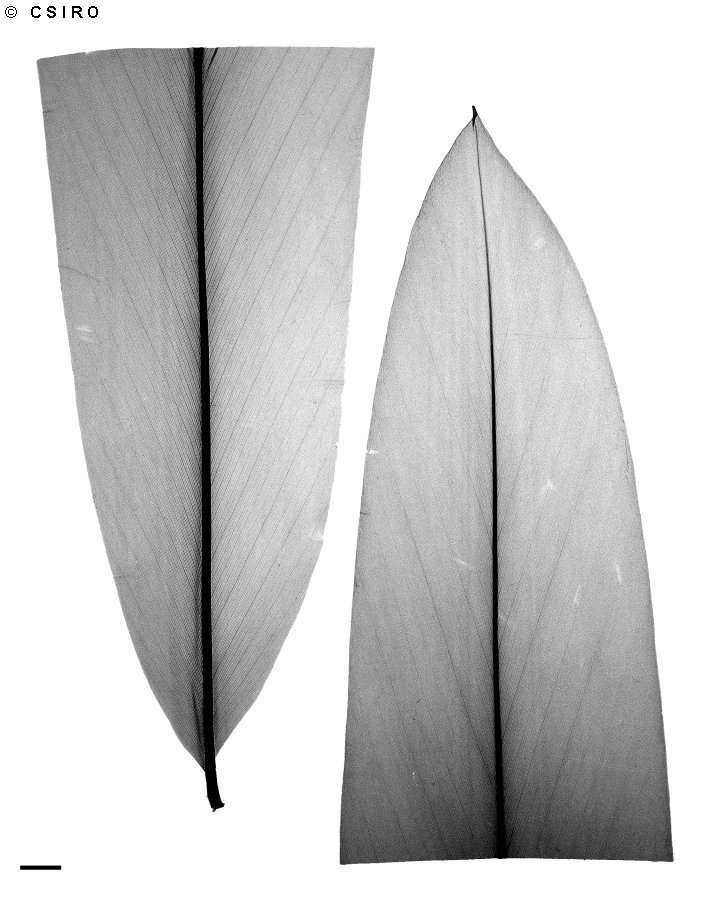Australian Tropical Rainforest Plants - Online edition
Hornstedtia scottiana (F.Muell.) K.Schum.






Schumann, K.M. (1904) Das Pflanzenreich Heft 20 : 194.
Scott's Ginger; Jiddo; Native Cardamom; Ginger, Scott's
Usually flowers and fruits as a shrubby plant about 2-4 m tall but it should be noted that only the leaves are above ground level. The true stem is below the soil surface.
Leaf blades shortly petiolate, lanceolate, about 40-70 x 7-16 cm, glabrous except for the ciliate margins, ligule about 0.5-1 cm long, pubescent, apex truncate. Petioles very short, about 1 cm long. Midrib depressed on the upper surface. Petioles or leaf bases sheathing the stem. 'Terminal bud' clothed in straight appressed golden hairs.
Inflorescences produced on short shoots from the base of the plant and are raised only slightly above ground level. Inflorescences about 7-12 x 4-5 cm. Sterile bracts often bright red, densely clothed in pale-coloured hairs, fertile bracts 5-8 cm long. Bracteoles about 3-6 cm long. Calyx about 5-8 cm long. Corolla tube 8-10 cm long, lobes about 1.5-2 cm long. Labellum longer than the corolla lobes, ovate, entire. Anther sessile, hairy. Pollen white. Ovary clothed in straight appressed hairs.
Fruit borne at ground level in a cone-like clusters, about 10 x 5-6 cm, of cream or reddish fleshy bracts which ooze a clear jelly-like exudate at maturity. Fruit an irregularly dehiscent capsule. Individual fruits about 20 x 20 mm. Seeds dark brown, about 4-5 mm long. Aril difficult to discern in the gelatinous mass enveloping the seeds. Embryo about 1 mm long surrounded by mealy endosperm.
First pair of true leaves broadly ovate. Petiole thin at the base of the leaf blade but expanding and sheathing the stem below the ligule. At the tenth leaf stage: midrib slightly depressed on the upper surface. Leaf blade drawn out into a fine point at the apex, base clasping the stem. Seed germination time 49 days.
Occurs in CYP and NEQ. Altitudinal range from near sea level to 200 m. Grows as an understory shrub in disturbed areas in lowland rain forest. Also occurs in the Moluccasm New Guinea and some of the neighbouring SW Pacific islands.
Fruit eaten by Cassowaries. Cooper & Cooper (1994).
Food plant for the larval stages of the Banded Demon Butterfly. Common & Waterhouse (1981).
A very large ginger with interesting basal flowering. It is a good plant for moist shaded areas in parks and larger gardens.





